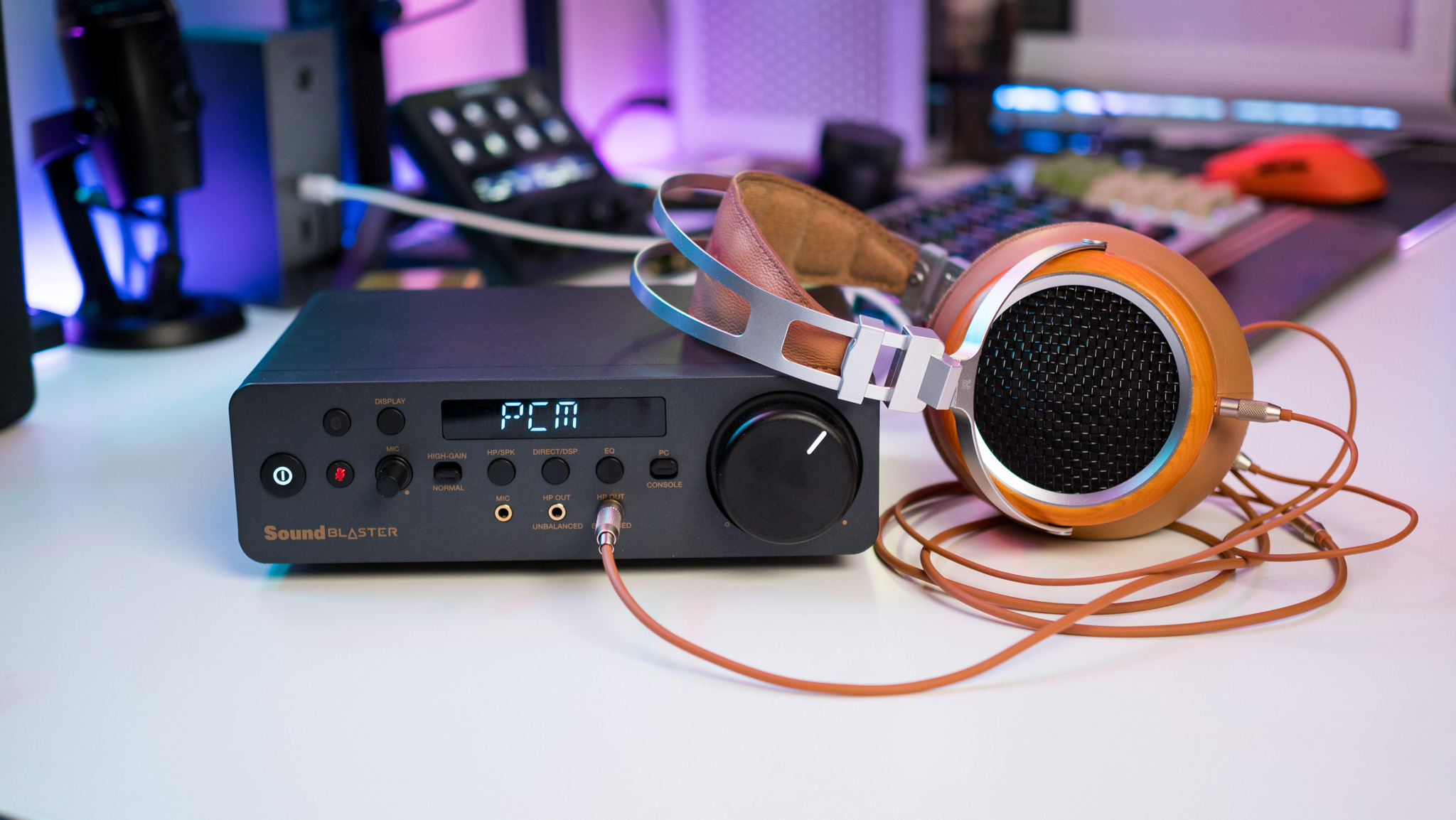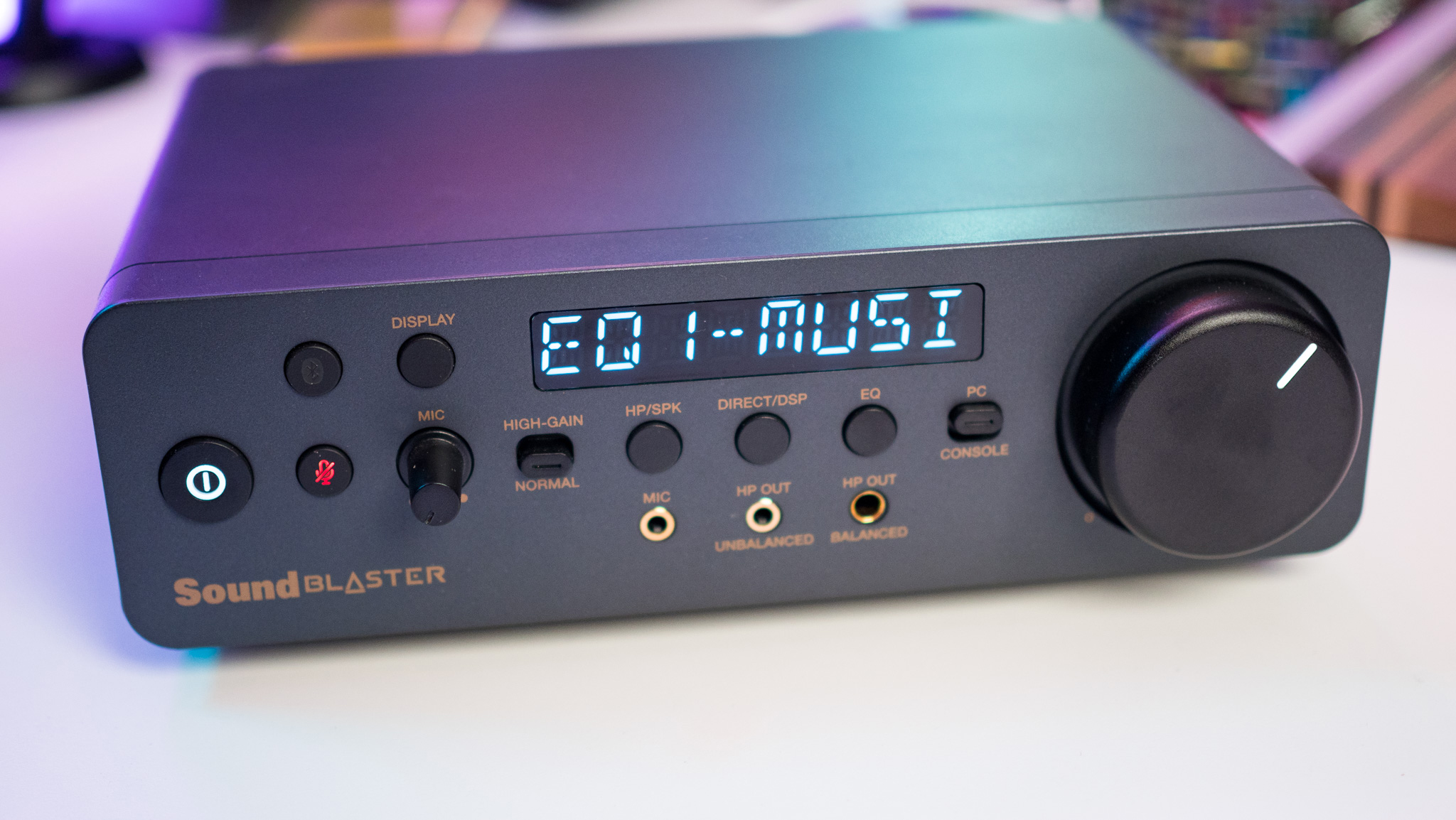Creative doesn’t have a huge presence in western markets, but it is a major player in Asia. The Sound Blaster series has a rich heritage of delivering standout audio products at a good value, and it started out making sound cards that could be plugged into a PCIe interface. I have fond memories of using the Sound Blaster X-Fi Fatal1ty sound cards back in college, and the brand has diversified into a host of new categories in recent years.
In what is a natural evolution, Creative makes Sound Blaster DACs these days, and the X5 is the brand’s most ambitious offering yet. The X5 contains two Cirrus Logic CS43198 DACs and custom amps that allow it to effortlessly power any headset, including demanding planar options.
The Sound Blaster X5 retails for $295 on Amazon, and that puts it squarely in the range of most mid-range DACs sold by Chinese brands. I think Creative backed itself into a corner with the X5, because even though it has a lot of custom features that you don’t get in other DACs, it doesn’t quite measure up to its immediate rivals.

That’s evident in the design. The X5 has a plastic build and a front fascia that’s busy with buttons and ports, with a large volume dial on the right. There’s a screen that shows connection details and playback information, and you get dedicated 3.5mm and 4.4mm balanced connections alongside a mic in option that signals the brand’s gaming-focused underpinnings.
You get toggles to adjust the gain, switch between PC and console, configure the EQ, DSP, and switch sources between the ports at the front and those at the back. There’s even a knob to adjust the volume of the mic, and a mute button. Clearly, a lot of attention went into the feature-set of the X5, and it isn’t lacking in this area.

On that note, you get optical in/out, along with RCA in and out and USB-C as well as USB-A connectivity. What I like about the X5 is that it can be powered via the USB bus, so there isn’t any need to connect it to an external power source. This versatility means you can use it with just about any device, and that’s why there’s a toggle to switch it to console mode up front.
And while the build quality is decent enough, the plastic chassis is noticeably light, and that’s not what you want in a DAC. It doesn’t feel as sturdy as other DACs, and Creative should have used a metal enclosure here — just like every other DAC manufacturer. Even $150 DACs like the Fiio F5 Pro feel much more sturdy as a result, and although the X5 has rubber feet at the bottom, the unit moves around when you’re connecting IEMs or headsets.

I connected the X5 to my Windows machine via USB-C, and I didn’t see any issues in this regard. But what’s annoying is that the volume knob is tied to the Windows volume, so if you manually change the volume in Windows, it doesn’t translate to the device. To make things even more confusing, Creative doesn’t show Windows volume on the panel, instead highlighting the decibel level. Ultimately, it just makes changing the volume convoluted than it needs to be.
When it comes to the sound quality itself, the X5 has a lot to offer. The DAC has a neutral signature and allows headsets and IEMs to shine, but this being Creative, you get adjustable EQ and a good selection of preset modes that change the dynamics of the sound to a significant degree. This isn’t usually a feature you get on many DACs, but if you want easy configurability of the sound, the X5 has plenty to offer.

On that note, the X5 has Bluetooth connectivity, and there’s a dedicated button that kicks the unit into pairing mode. Connecting via Bluetooth is about as easy as it gets, but the main issue in this area is that it doesn’t have any AptX codecs or LDAC, so you’re limited to SBC and AAC. Other Bluetooth-enabled DACs in this segment offer at least a few high-res codecs as standard.
The X5 delivers 313mW of power at 150Ω, and while that isn’t as high as other DACs — Fiio’s K7 goes up to 500mW at 300Ω — it is enough to drive just about any headset. On the whole, I didn’t see any issues with the sound itself, and the customizability is a key differentiator.

That said, my current recommendation in the sub-$300 segment is the Fiio K7; there’s a Bluetooth-enabled version of the DAC that costs $249 on Amazon, and it has a much better design with a metal chassis, sounds great, and includes all the connectivity options you want.
Overall, Creative got a lot right with the Sound Blaster X5, but by positioning it at the $300 mark, the brand essentially priced itself out of contention. With plenty of other options available at this price point, I don’t really see why anyone would choose the X5 — unless you need a DAC that can be powered straight via the USB bus or want to use one with the PS5. Outside of these use cases, you’re better off going with Fiio, Schiit, or SMSL.
👇Follow more 👇
👉 bdphone.com
👉 ultraactivation.com
👉 trainingreferral.com
👉 shaplafood.com
👉 bangladeshi.help
👉 www.forexdhaka.com
👉 uncommunication.com
👉 ultra-sim.com
👉 forexdhaka.com
👉 ultrafxfund.com
👉 ultractivation.com
👉 bdphoneonline.com


